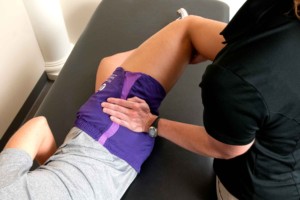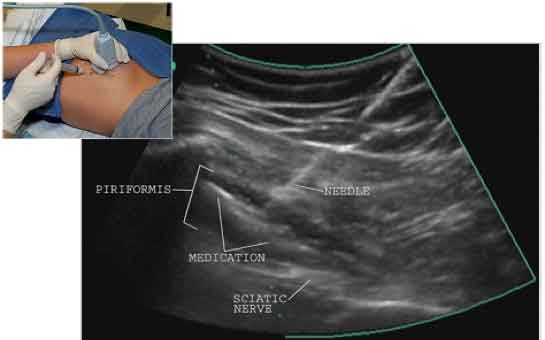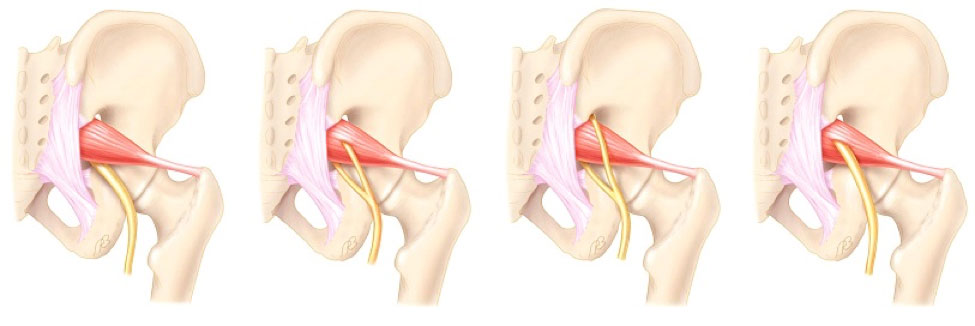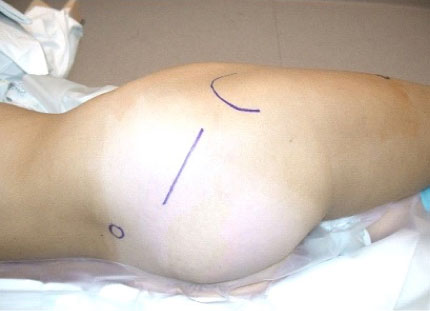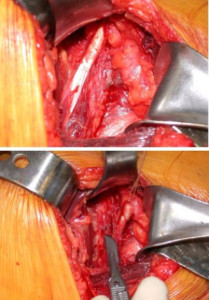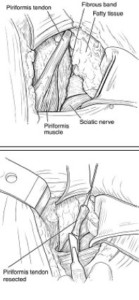Successful treatment of piriformis syndrome is dependent on an accurate diagnosis, which can sometimes be inconclusive, even with the most thorough evaluation. Regardless of whether sciatica is coming from the back, or less commonly from the piriformis, most of these problems will respond to a generalized conservative program.
This includes trying to identify and modify any offending activities as well as supervised physical therapy and nonsteroidal anti-inflammatory medications. Treatment by a knowledgeable physical therapist can often help alleviate the symptoms and may also help to clarify the diagnosis. For recalcitrant cases, ultrasound-guided injection of the piriformis has diagnostic value in assessing its contribution to symptoms and may have therapeutic value. If prolonged alleviation of symptoms is achieved, repeated injections are appropriate.
Surgical release of the piriformis and decompression of the sciatic nerve can be successful for recalcitrant cases, but is rarely necessary. There are numerous anomalies where the nerve may pass through or around portions of the piriformis muscle. Thus, if the piriformis muscle is released, this entire area must be carefully explored to assure adequate decompression of the sciatic nerve. The results of release are often remarkable with regard to pain relief and patient satisfaction, but this is not always the case. This reflects some of the difficulties with this diagnosis even with the most thorough clinical evaluation. Dr. Byrd reported his clinical experiences and results of open surgery back in 2005 (Related Study: Operative Techniques in Sports Medicine). In 2011, he devised an arthroscopic approach to replace the open technique as a less-invasive outpatient procedure. No complications have been encountered with this operation, but since work is being done close to the nerve as it exits the pelvis, there are potential risks of nerve injury or uncontrollable bleeding.
The Piriformis resides within the Subgluteal space which is asscessed with two portals deep to the Guteus maximus. The Piriformis Tendon (PT) is just behind the Gluteus medius and minimus, coursing perpendicular to the Sciatic Nerve (SN). As the lower boarder of the Piriformis is a Fibrovascular Band (FB) that must be released as well. The Tendon is divided with a cutting instrument and once resected, the Sciatic Nerve is fully released up to where it exits from the pelvis through the Sciatic Notch.
Rehabilitation following piriformis release and sciatic nerve decompression is less structured than some joint problems. Immediate weightbearing is allowed, with crutches just to normalize gait for a few weeks. Prolonged sitting is avoided for a month or two since this usually exacerbates symptoms. Physical therapy focusses mostly on getting the muscle groups to fire and optimizing mobilization of the soft tissues in order to prevent scarring or adhesions. There is some soreness from the surgery, but often the nerve pain that plagues patients prior to surgery may be almost immediately better. However, in chronic cases with longstanding compression of the nerve, it may take a couple of months for noticeable improvement.
Video demonstrates Endoscopic Release of the Piriformis from the Subgluteal Space.
Location
2004 Hayes Street
Suite 700
Nashville, TN 37203
Office Hours
Monday-Friday:
8:00 am – 5:00 pm
